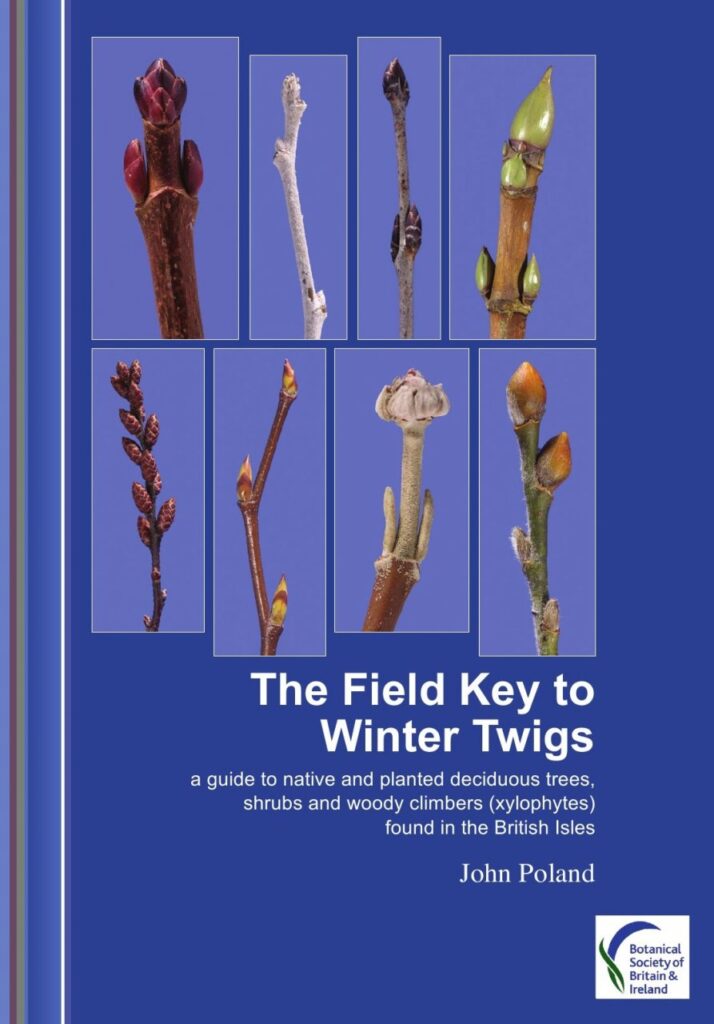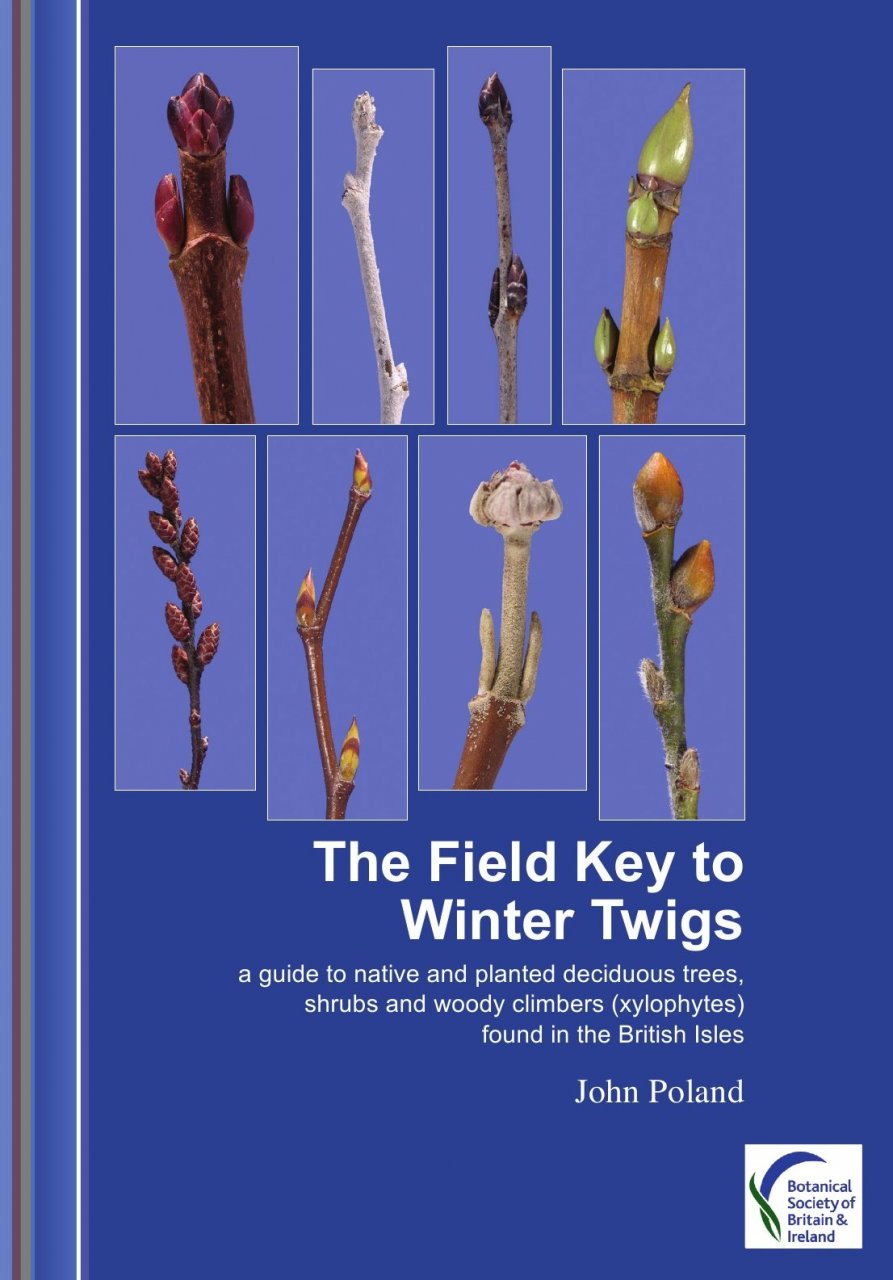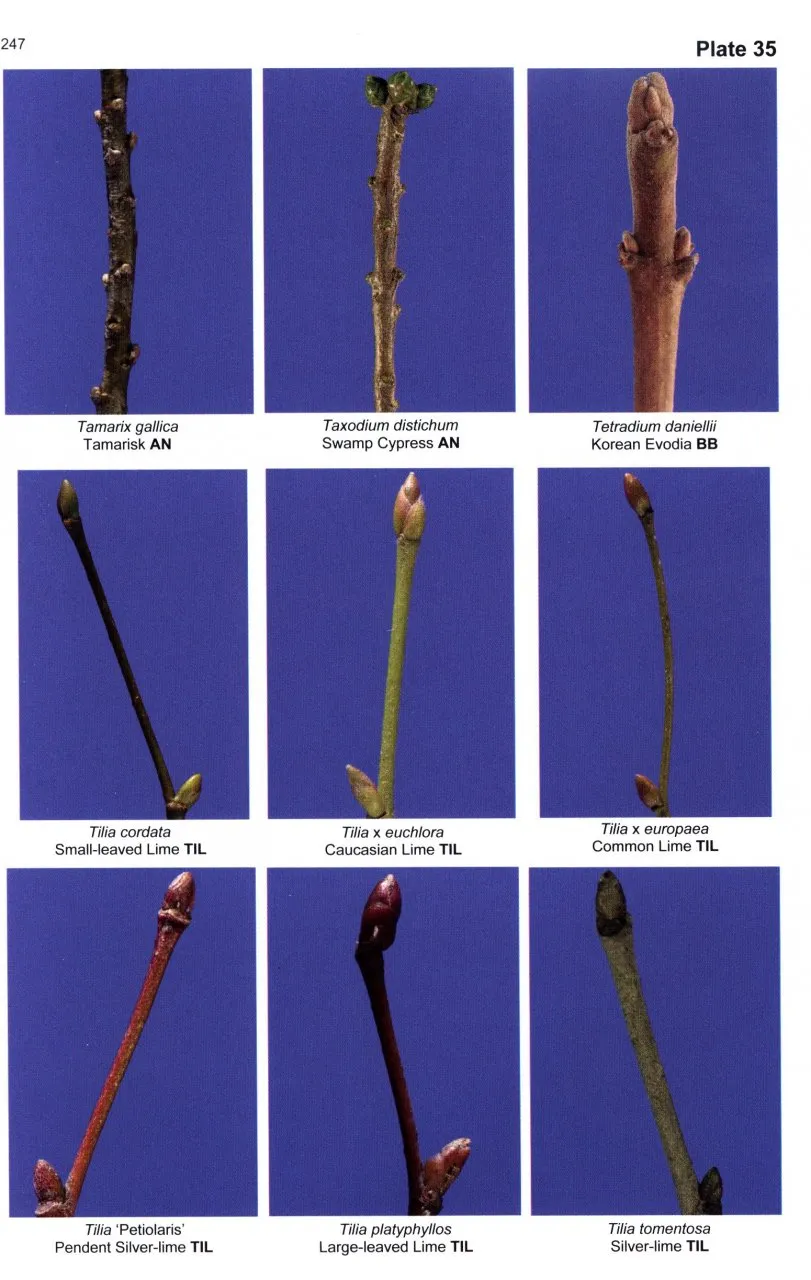Twigs are in the spotlight right now. First there was Kew’s lavish Identification of Trees and Shrubs in Winter using Buds and Twigs (reviewed in BW 30: 151), and now John Poland’s new Field Key. Both cover the 400-odd woody plants found wild or naturalised in Britain (excluding only the more critical roses, whitebeams and brambles, which probably cannot be distinguished by twigs alone). The Field Key is a much slimmer (and much cheaper) book, devoted mainly to a long key divided into sections with detailed descriptions of each twig and the distinguishing characters underlined. It has a privately published feel about it, on cheaper paper than the mainstream BSBI Handbooks, and in a small font that wastes no space. The drawings by Robin Walls are excellent, and so are the 38 packed colour plates, with each twig photographed against a standard blue background. Poland is the acknowledged expert, and I have no doubt that this book has been thoroughly checked and is 100% reliable. It forms a natural companion to Poland’s equally challenging Vegetative Key to the British Flora, which shows you how to identify plants from leaves alone.
View this book on the NHBS website
A twig is the first-year shoot of a woody plant. In summer it bears flowers and leaves; in winter just buds. Perhaps surprisingly, you can identify a twig almost as easily as a flower, once you have mastered the terminology and the basics of Poland’s key. Staring narrowly at your twig, you can decide, for instance, whether the leaf-scar resembles ‘a monkey face’ or ‘a bud wearing a hula skirt’. You might discover twigs smelling of mice or ‘stewed cherries’, or tasting of aspirin or rosewater. Whether identifying trees and bushes in winter grows to become the ‘fun’ sport that it evidently is in North America remains to be seen, but I am sure that many British field botanists will wish to rise to the challenge.



